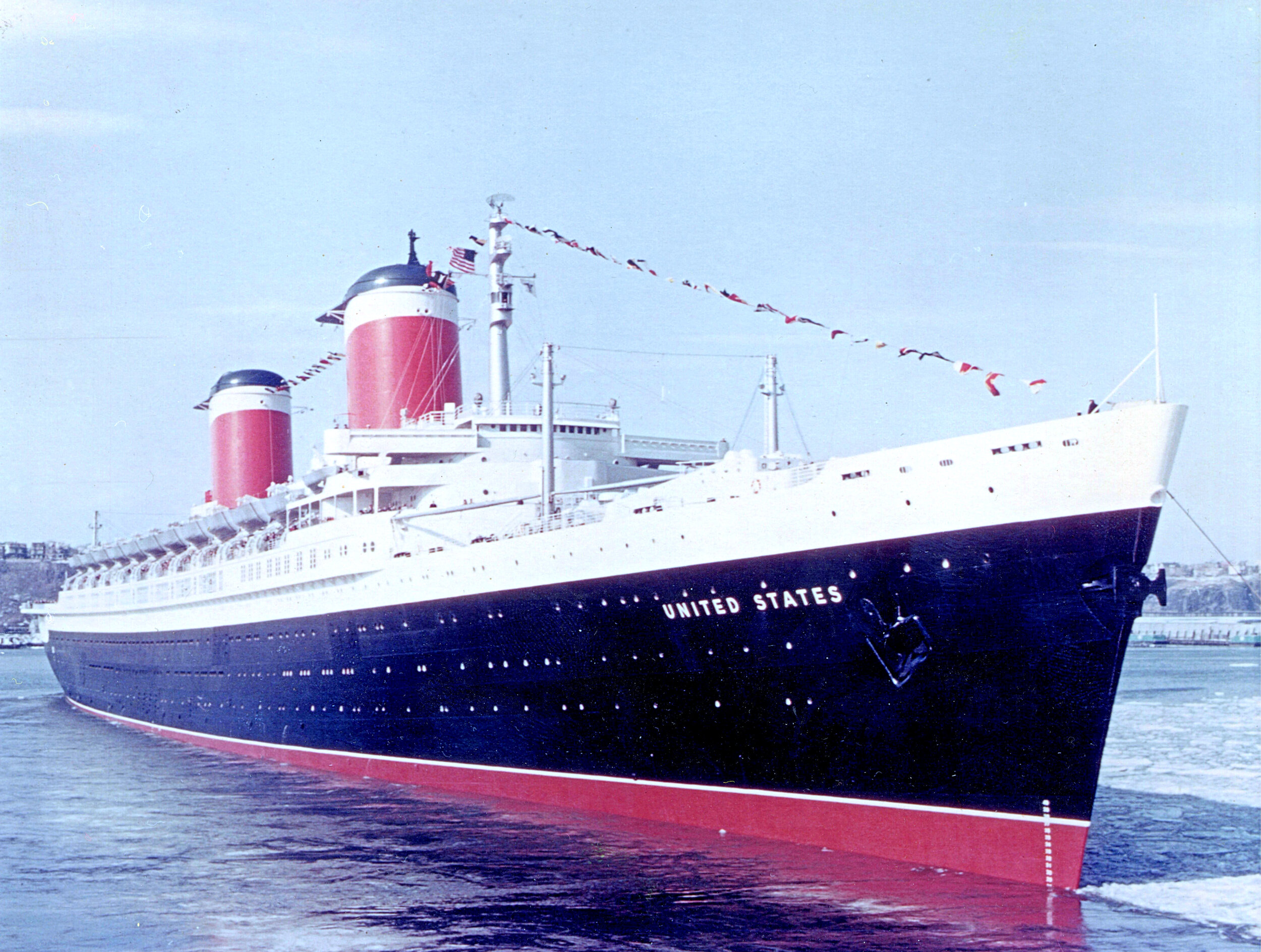SS United States vs. RMS Titanic
SS United States
990 ft in Length
101 ft in Beam
53,330 Gross Registered Tons
12 Decks
Registered in United States
Holds 3,016 People or 15,000 Troops
894 First Class
524 Cabin Class
554 Tourist Class
1,044 Crew
24+ Additional Rafts Holds
4,060 People
800 Transatlantic Crossings
248,000 Shaft Horsepower
38 Knots (44 MPH) at Top Speed
In Service June 3, 1952
Out of Service November 14, 1969
Awaiting Restoration
RMS Titanic
882.5 ft in Length
92.5 ft in Beam
46,328 Gross Registered Tons
9 Decks
Registered in United Kingdom
Holds 3,547 People
735 First Class
674 Second Class
1,024 Third Class
860 Crew
16+ 4 Collapsible Lifeboats Holds
1,178 People
0 Transatlantic Crossings
55,000 Shaft Horsepower
24 Knots (28 MPH) at Top Speed
In Service April 10, 1912
Out of Service April 15, 1912
Sunk on Maiden Voyage
Size
The SS United States’ is historically significant as a remarkable example of innovation and engineering. At 990 ft. long, the SS United States is over 100 ft. longer than the Titanic. If you stood the SS United States on one end, she’d be the 16th tallest building in New York City. Today, the SS United States remains the largest passenger ship ever built in America.
The RMS Titanic was the largest moving object ever built back in 1912, but its reign was short-lived. If she had never struck an iceberg, Titanic’s place in history would have been quickly eclipsed by larger, faster ships. In fact, just one month after Titanic’s sinking a larger passenger ship was launched.
Speed
The SS United States, as part of a top secret Cold War program was designed to break all speed records. On her maiden voyage, she made the transatlantic run in just THREE and a half days. Considering her size, imagine the Chrysler Building barreling through the ocean at over 40 miles per hour! To this day, she still holds the trans-Atlantic speed record — no other passenger ship has crossed the Atlantic faster in both directions.
The Titanic, despite what some film accounts implied, was not built for speed. The Titanic’s intended speed would have brought her from Southampton, England to New York in five and a half days.
Safety
Many lessons learned in Titanic’s sinking influenced the design of the SS United States. Both ships had double bottoms, but the United States’ extended up along the sides of her hull so that an incident like Titanic’s iceberg collision would only cause minimal damage. The SS United States had watertight compartments that extended an unprecedented 40 feet above the waterline, and she had 20 compartments as opposed to Titanic’s 16. The SS United States even had a “redundant” engine room, so that if one of her engine rooms flooded, the other could still operate and generate electricity for the ship. If the SS United States had ever suffered comparable catastrophic damage to the Titanic, the ship would not have broken apart because her superstructure was made of aluminum — much more flexible than steel and not requiring any expansion joints. Many ships of Titanic’s era were also destroyed by fire, rather than collision damage. Taking this into account, the SS United States was built almost completely fireproof. Utilizing many new materials invented for use in World War II, it was said that the only wood aboard the SS United States were the “pianos and the butcher’s blocks.” William Francis Gibbs, the vessel’s designer, only allowed mahogany pianos on board after Theodore Steinway succeeded in demonstrating his pianos’ fire-resistant qualities by dousing one of them in gasoline and setting it alight.
The Titanic, despite what some film accounts implied, was not built for speed. The Titanic’s intended speed would have brought her from Southampton, England to New York in five and a half days.


